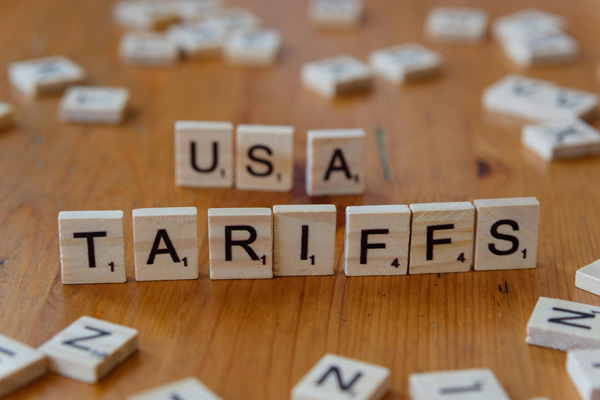Fed policymakers warn that tariffs could push prices higher again

[USA tariffs concept with scrabble tiles. Photo Credit to Pexels]
At its most recent meeting on June 18, 2025, the U.S. The Federal Reserve left its target interest rate unchanged for the fourth straight meeting, with persistent inflation concerns limiting its policy maneuvers.
According to Fed Chair Jerome Powell, the decision was made in response to ongoing inflation uncertainty, particularly in light of increased global tariffs and trade policy developments.
Even though inflation has slowed in recent months, Powell warned that the possibility of a resurgence remained considerable if tariff increases were passed on to consumers.
During the press conference, he stated, "Someone has to pay for the tariffs, and ultimately the cost of the tariff has to be paid, and some of it will fall on the end consumer."
Recent Fed predictions indicate that core inflation (without taking food and energy into consideration) will rise to 3 percent in the coming year, which is above the 2 percent target, while the economy is expected to grow at a 1.4 percent rate, which is slower than previously expected.
The Fed’s latest projections also suggest the unemployment rate will climb to 4.5 percent, indicating a modest slowdown in the labour market even with high interest rates being maintained.
Though investors had anticipated a rate reduction earlier, Powell indicated that policymakers will wait until there is clearer evidence that inflation has stabilized.
He said, "We'll make smarter and better decisions if we just wait a couple of months or however long it takes to get a sense" of where the economy is headed.
Following the Fed's decision to hold rates steady, President Donald Trump, in a Thursday morning message on Truth Social, called Fed Chair Jerome Powell a "fool," responding publicly to the U.S. central bank's decision the previous day to keep interest rates unchanged.
Nonetheless, Powell and the Fed's board of governors maintained that premature cuts may erase months of progress in lowering inflation.
The latest forecast from the Fed indicates that 12 of the 19 Federal Reserve officials expect one or two reductions in interest rates before the year ends.
However, seven officials see no cuts at all this year, highlighting deepening divisions among policymakers as economic data continues to show mixed signals.
Economist Greg McBride stated, "It is tempting to romanticize the idea of lower interest rates, particularly from a borrowing perspective; the reason for lower interest rates is very important, we want interest rates to come down because inflation pressures are easing, not because the economy is weakening.”
Markets showed a muted reaction to the announcement, with minimal movement in stock prices and a slight increase in government bond yields as investors adjusted their expectations downward.
Analysts currently believe that if a rate cut occurs, it will most likely happen in September or later, depending on incoming inflation data and consumer spending patterns.
Meanwhile, uncertainties about potential US tariffs continue to weigh on growth forecasts.
Powell warned reporters that "longer-term inflation expectations must remain well anchored" to prevent repeating previous inflationary cycles.
With an eye on what the Fed will do next, markets will closely monitor future inflation data, employment statistics, and international developments that have the potential to influence the economic outlook.
For now, the central bank appears committed to its cautious course of action.

- Alex Han / Grade 11 Session 3
- Thornhill Secondary School

![THE HERALD STUDENT REPORTERS [US]](/assets/images/logo_student_us.png)
![THE HERALD STUDENT REPORTERS [Canada]](/assets/images/logo_student_ca.png)
